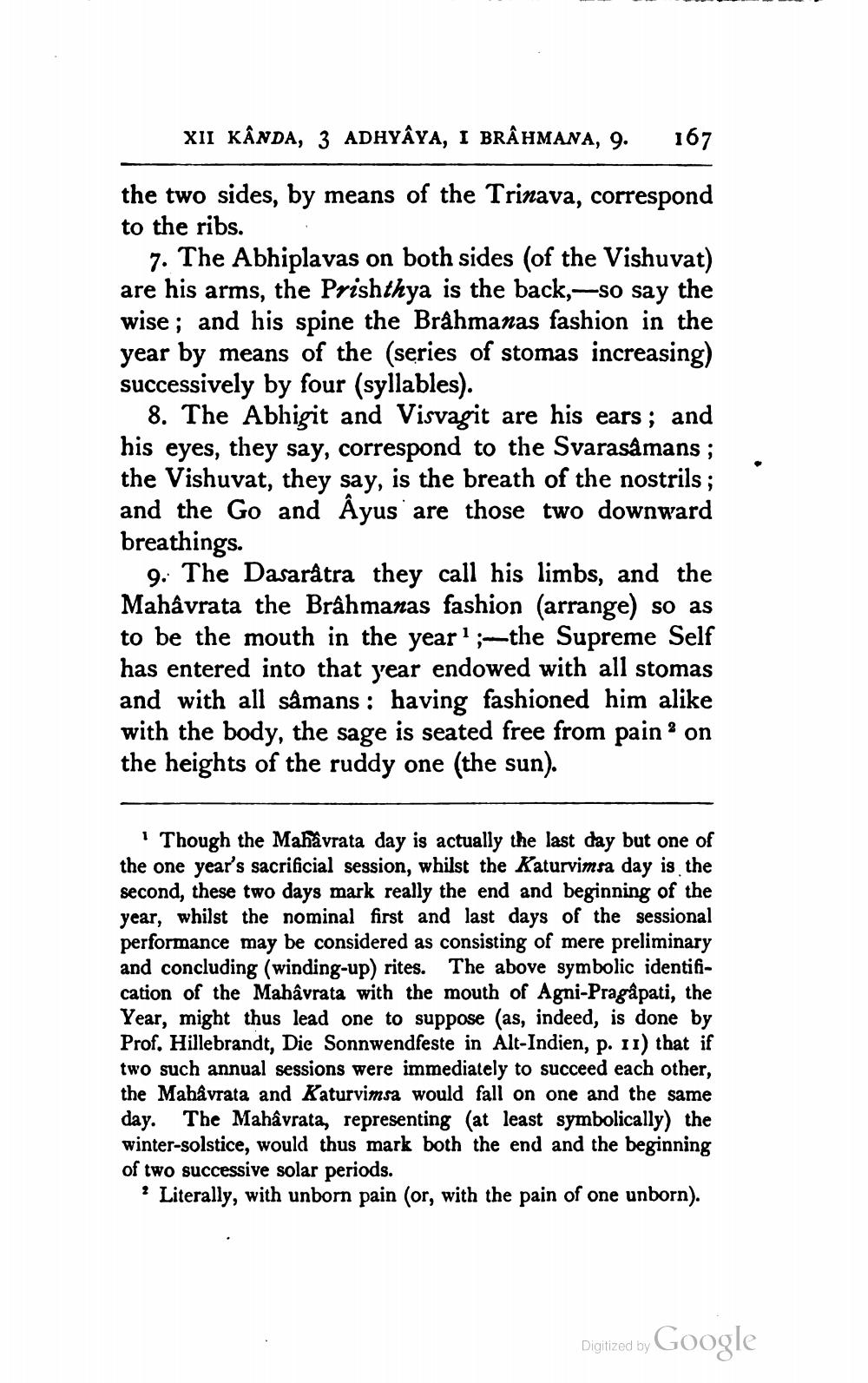________________
XII KÂNDA, 3 ADHYAYA, I BRAHMANA, 9. 167
the two sides, by means of the Trinava, correspond to the ribs.
7. The Abhiplavas on both sides (of the Vishuvat) are his arms, the Prishthya is the back,- -so say the wise; and his spine the Brahmanas fashion in the year by means of the (series of stomas increasing) successively by four (syllables).
8. The Abhigit and Visvagit are his ears; and his eyes, they say, correspond to the Svarasâmans; the Vishuvat, they say, is the breath of the nostrils and the Go and Âyus are those two downward breathings.
;
9. The Dasarâtra they call his limbs, and the Mahâvrata the Brahmanas fashion (arrange) so as to be the mouth in the year1;-the Supreme Self has entered into that year endowed with all stomas and with all sâmans: having fashioned him alike with the body, the sage is seated free from pain 2 on the heights of the ruddy one (the sun).
'Though the Mahavrata day is actually the last day but one of the one year's sacrificial session, whilst the Katurvimsa day is the second, these two days mark really the end and beginning of the year, whilst the nominal first and last days of the sessional performance may be considered as consisting of mere preliminary and concluding (winding-up) rites. The above symbolic identification of the Mahâvrata with the mouth of Agni-Pragâpati, the Year, might thus lead one to suppose (as, indeed, is done by Prof. Hillebrandt, Die Sonnwendfeste in Alt-Indien, p. 11) that if two such annual sessions were immediately to succeed each other, the Mahâvrata and Katurvimsa would fall on one and the same day. The Mahâvrata, representing (at least symbolically) the winter-solstice, would thus mark both the end and the beginning of two successive solar periods.
2
Literally, with unborn pain (or, with the pain of one unborn).
Digitized by
Google




